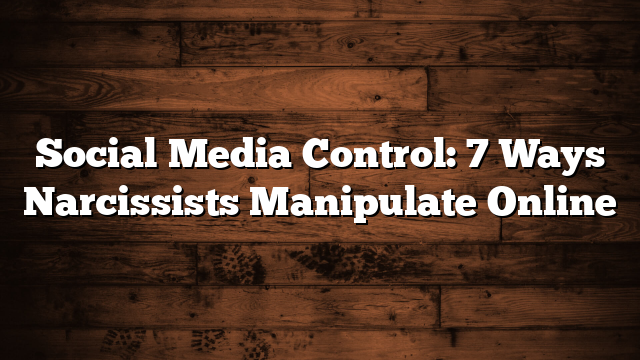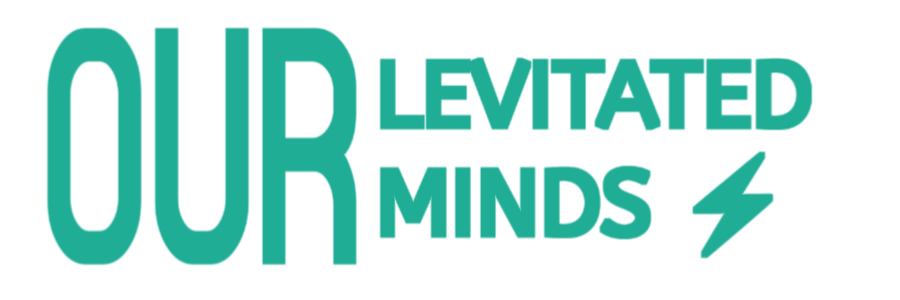Social Media Control: 7 Ways Narcissists Manipulate Online
Ways Narcissists Use Social Media to Control
Social media has become an integral part of everyday life, offering platforms to connect, share, and express ourselves. However, for narcissists, these platforms become powerful tools to manipulate, control, and dominate others. Understanding the tactics narcissists use on social media is essential for recognising manipulation and protecting yourself from their harmful influence.
Behind The Mask: The Rise Of A Narcissist
1. Curated Perfection
Narcissists thrive on admiration and validation. On social media, they carefully craft a flawless image — sharing only the best photos, achievements, and moments. Every post is meticulously edited to present a life of success, beauty, and happiness. This curated perfection is far from reality, but it serves a purpose: to make others feel inferior, envious, or inadequate.
By projecting an idealised version of themselves, narcissists boost their sense of superiority. They enjoy the attention and praise from followers who aspire to their ‘perfect’ life. This tactic is not just about self-promotion; it’s a way to control how others perceive them and maintain an image that shields their vulnerabilities and flaws.
2. Public Humiliation
Direct confrontation can be risky for narcissists, as it might expose their manipulations. Instead, they often resort to subtle or indirect attacks on social media. Posting embarrassing details, sharing inside jokes with hidden meanings, or making passive-aggressive comments are common tactics to shame or belittle someone without facing them openly.
This public humiliation is calculated. It puts the victim on the spot, making them feel exposed and powerless, especially when mutual friends or followers witness it. It also sends a warning to others not to cross the narcissist, reinforcing their control through fear and embarrassment.
3. Triangulation
Triangulation is a classic narcissistic tactic that involves creating conflict between others to maintain power. On social media, this can look like tagging friends in posts meant to stir drama or posting cryptic messages that cause confusion and jealousy.
By involving third parties, narcissists keep people off balance and distracted from the real issues. This division also makes it easier for them to manipulate relationships and maintain dominance. The chaos generated by triangulation often leaves victims feeling isolated and uncertain about who to trust.
4. Silent Treatment via Messages
Ignoring messages or leaving someone on ‘read’ without replying might seem harmless, but for narcissists, it’s a weapon of control. This silent treatment creates anxiety and insecurity in the recipient, who may obsessively wonder what they did wrong or how to get attention.
This tactic punishes the other person without direct confrontation. It establishes power by controlling communication and emotional connection. The narcissist remains detached and unresponsive, making the victim desperate for approval and connection, which the narcissist can then withhold at will.
5. Posting Private Information
Boundaries mean little to narcissists. Sharing private or sensitive information online without consent is a deliberate tactic to embarrass or intimidate someone. This breach of privacy not only humiliates the victim but also asserts the narcissist’s dominance by showing they don’t respect personal limits.
Such posts may include personal messages, photos, or details meant to damage reputations or relationships. The victim feels betrayed and exposed, while the narcissist gains control by weaponising the victim’s private life as a form of public punishment.
6. Love-Bombing Publicly
Narcissists often use grand gestures to draw attention and secure loyalty. On social media, this can appear as over-the-top declarations of love, friendship, or admiration, designed to impress followers and convince others of their kindness or generosity.
However, this public love-bombing is usually insincere and manipulative. It serves to mask their true intentions and secure emotional control over the target or the audience. The narcissist thrives on the attention and the power that comes with seeming adored and admired, even if behind the scenes the relationship is toxic.
7. Smear Campaigns Online
When a narcissist feels threatened or loses control, they may launch smear campaigns to damage your reputation and isolate you socially. Social media provides a vast audience for spreading false rumours, misleading stories, or edited content that paints you in a negative light.
These campaigns are designed to turn others against you and maintain the narcissist’s dominance even after contact ends. The victim often faces ongoing harassment and defamation, making it difficult to rebuild their life and relationships. The narcissist’s goal is control — and they will use any means, including social media, to keep their power intact.
Protecting Yourself from Narcissistic Control on Social Media
Awareness is key to protecting yourself. Recognising these tactics helps you maintain perspective and avoid falling into the narcissist’s trap. Here are some practical tips:
- Limit Sharing: Be cautious about what personal information you share online. Keep boundaries firm.
- Block and Mute: Don’t hesitate to block or mute narcissists to prevent their manipulative tactics from affecting you.
- Seek Support: Talk to trusted friends or professionals if you experience harassment or emotional abuse online.
- Document Evidence: If you face online abuse, save screenshots and messages as evidence for legal or support purposes.
- Trust Your Instincts: If something feels controlling or abusive, it probably is.
Social media amplifies narcissistic behaviours, allowing abusers to control, manipulate, and harm on a public scale. Understanding their tactics empowers you to see through the mask, protect your mental health, and reclaim your life.
Check these out!
Behind The Mask: The Rise Of A Narcissist
15 Rules To Deal With Narcissistic People.: How To Stay Sane And Break The Chain.
A Narcissists Handbook: The ultimate guide to understanding and overcoming narcissistic and emotional abuse.
Boundaries with Narcissists: Safeguarding Emotional, Psychological, and Physical Independence.
Healing from Narcissistic Abuse: A Guided Journal for Recovery and Empowerment: Reclaim Your Identity, Build Self-Esteem, and Embrace a Brighter Future
(Sponsored.). https://betterhelp.com/elizabethshaw
Advertisements
Click on the links below to join Elizabeth Shaw – Life Coach, on social media for more information on Overcoming Narcissistic Abuse.
On Facebook.
On YouTube.
On Twitter.
On Instagram.
On Pinterest.
On LinkedIn.
On TikTok
The online courses are available by Elizabeth Shaw.
For the full course.
Click here to sign up for the full, Break Free From Narcissistic Abuse, with a link in the course to a free, hidden online support group with fellow survivors.
For the free course.
Click here to sign up for the free online starter course.
To help with overcoming the trauma bond and anxiety course.
Click here for the online course to help you break the trauma bond, and those anxiety triggers.
All about the narcissist Online course.
Click here to learn more about the narcissist personality disorder.
The narcissists counter-parenting.
Click here for more information on recovery from narcissistic abuse, and information on co-parenting with a narcissist.
Elizabeth Shaw is not a Doctor or a therapist. She is a mother of five, a blogger, a survivor of narcissistic abuse, and a life coach, She always recommends you get the support you feel comfortable and happy with. Finding the right support for you. Elizabeth has partnered with BetterHelp (Sponsored.) where you will be matched with a licensed councillor, who specialises in recovery from this kind of abuse.
Click here for Elizabeth Shaw’s Recommended reading list for more information on recovery from narcissistic abuse.




